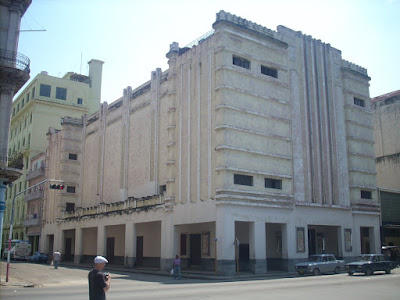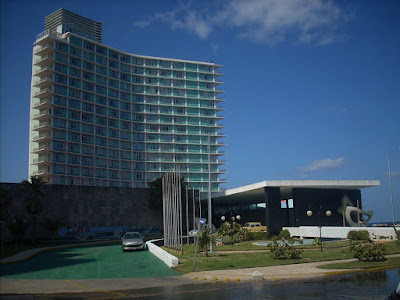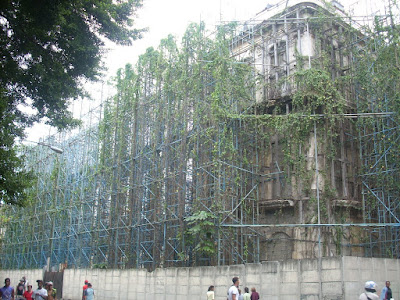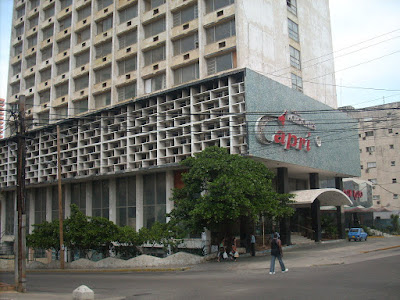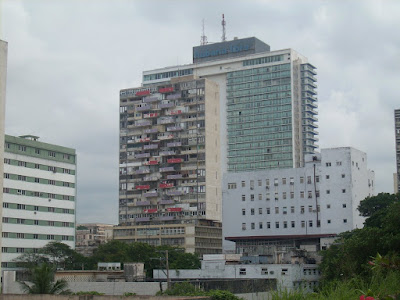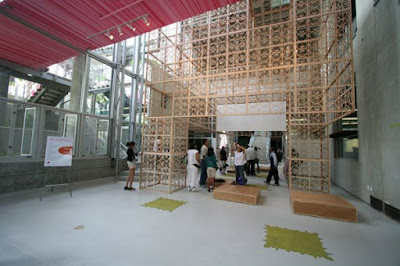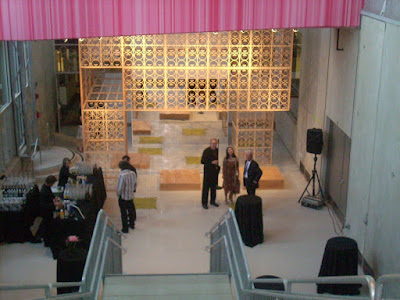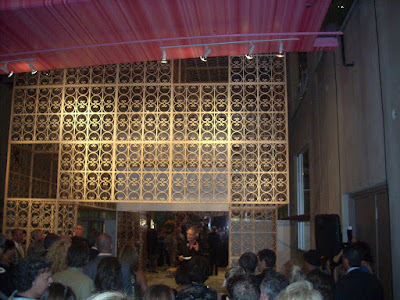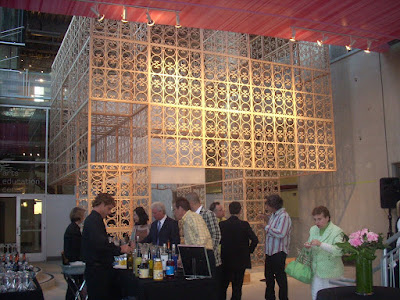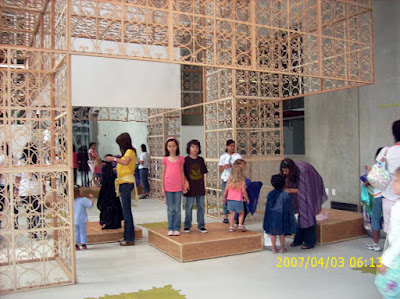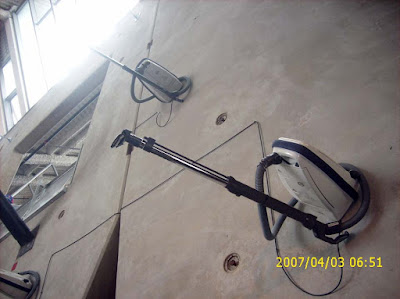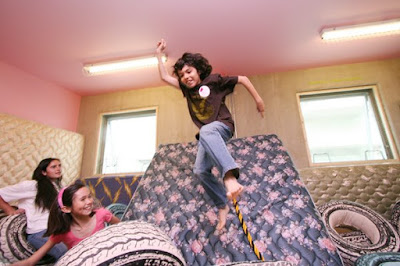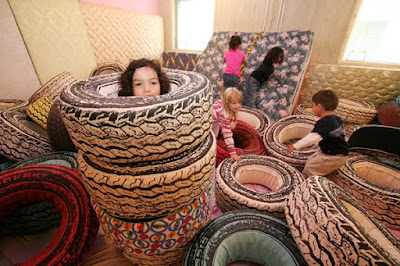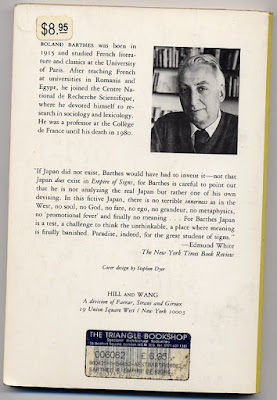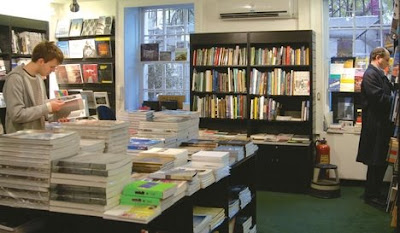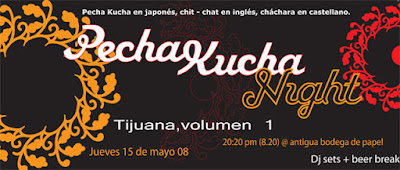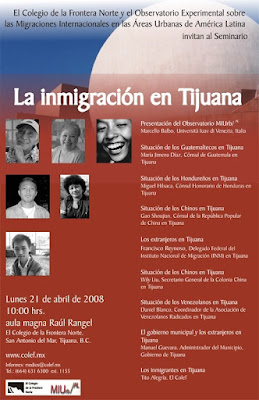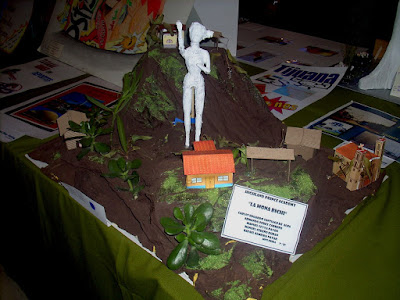The 90’s generation
Aquí esta una charla que se llevo acabo vía Internet para la revista ArcCA, publicación del colegio de arquitectos del estado de California. Las preguntas y edición la hizo Peter Zellner. Una versión editada se publicara este mes. Esta versión es la original, sin edición.

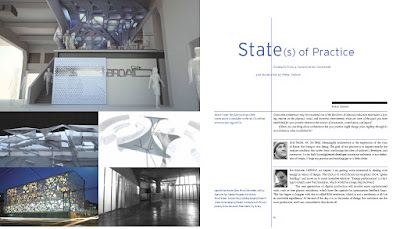

Peter Zellner, “California: State(s) of Practice, ” arcCA- the AIA California Council Journal
Introduction
What are the opportunities and challenges facing young architects across the State of California? What is the meaning of architectural practice to individuals trained in the 90s and emerging now as architects? How does practice today differ from practice yesterday and practice tomorrow?
Conceived as a one week online forum State(s) of Practice invite 9 young practices from across the State to address, debate and explore a variety of issues. Addressing the the state of the physical environment (built and natural), social change, politics, cultural and economic conditions, technology and professionalism this forum was conceived as a means to map the forces shape young practitioners today.
Participating Firms
Bay Area: Lisa Iwamoto, Brian Scott / IwamotoScott
Thom Faulders / Thom Faulders Architects
LA: Joe Day, DeeganDayDesign
Thom Wiscombe, Emergent
Marcelo Spina, Georgina Huljich / Patterns;
Gail Borden/ Borden Partnership
San Diego/Tijuana:
Teddy Cruz / estudio Cruz
Rene Peralta, / Generica
Lloyd Russell / Lloyd Russell Architects
“California: State(s) of Practice, ” arcCA- the AIA California Council Journal
Peter Zellner
Question 1.
How will architectural practice as we understand it today transform in the future?
What are some of the changes that this generation of architects should anticipate relative to how we structure our architectural practices?
Gail Borden
The trajectory of architecture has changed enormously over the past fifty years. Older models of practice and the discipline are almost unrecognizable today. Newness and complexity primarily surrounding information have changed the playing field making innumerable new disciplinary models and methodologies valid. Architects now operate under different circumstances and as such have to set new agendas and find new ways of working. Materiality, representation, technology, digital information management, fabrication, firm organization, and even project typologies have forced the model for practice has to change. Clients are truly national and international. Collaboration is essential. For us at the Borden Partnership it makes collaborations across art, architecture, material possible. Slowly we are moving towards a brick and mortar practice focused on the production of buildings which is always the hope, but the need for flexibility, invention and adaptation is essential.
Joe Day
It’s been an astounding decade for both the discipline and the profession of architecture, and I think many of us are still coming to terms with our good fortune, even as those fortunes are probably about to change dramatically. Those entering the field between 1995 and 2005 have enjoyed a constant surge in construction, consistently rising property values, and a broad renewal of interest in modern/contemporary design. At the more advanced and micro-practice end of the design spectrum that this group represents, it has also been a decade of unprecedented opportunities to teach at far more schools. The whole idea of recent graduates migrating by various routes towards a ‘brick and mortar’ practice – if in fact they choose to migrate – rather than being encased in one headed by far more senior practitioners for a decade or two, is revolutionary.
Stephen Slaughter
This prompts two critical questions; why in a time of unprecedented architectural expansion is it advantageous to either work for a master or be insulated from what has been described as a “brick and mortar” practice within academia? And, how has teaching or the opportunity to produce for the gallery or to participate in an avant-garde architectural discourse not available to most practitioners or to elaborate and disseminate one’s architectural agenda within the academy, situated our generation with regard to the built environment?
Peter Zellner
We have all raised interesting perspectives that I believe point to an increasingly unavoidable conclusion. Is there a schism developing between architecture as it is practiced by the profession at large versus architectural practice as it is being currently re conceived within the academy. It is too often the claim of professional practices today that many graduates are under trained for a professional environment while conversely it may be said that many professional offices have been too slow to take advantage of emerging design approaches and technologies (one thinks here of time based modeling, fabrication and BIM) that are being investigated and promoted by young “academic-architects.”
Rene Peralta
New types of practices are becoming more flexible in the type of work they produce in some cases blurring research with office projects. This entails the constant expansion and contraction of staff, which in most cases is made up of students or recent graduates. I believe smaller office now have more of a chance to participate in work that was once meant for larger firms. New technologies from management to design to construction admin are now easily available enabling smaller staffed organization to accomplish more tasks. I believe in the near future it would be possible for small firms to network efficiently and produce work at many scales. As I mention, and as Joe comments as well the demographics of architectural staff is changing. Young architects and recent grads are now better trained in variety software applications that range from web design, video editing to 3d modeling. This means practices can perform a variety tasks including branding, marketing and publication of their own works that where outsourced before.
Within new structures of practice I believe research and self initiated work such as housing prototypes, urbanism, material research etc. are an important part of the work, yet funding for this rubric is tied to the economic mechanism within the firm’s context. In TIJUANA we do not have the instruments or in most cases funding for this type of task is very limited because they don’t fall under the traditional view of an architectural practice. Working bi-nationally allows us to tap into resources not available in Latin America.
Gail Borden
I absolutely believe there is a schism between the profession and the academy. I believe this happened during the formal and conceptual backlash to modernism. The intellectual ideals of the academy and the actualities of the practice diverged and exploded later with the advent of newer technologies [digital, material etc.] that placed a massive divide between what the profession and the academy. I believe that smaller practices closely linked, or even rooted in academia have the opportunity to bridge the conceptual and the actual. These in combination the academic access to a relative financial stability [providing selectivity in client and project opportunities], and hard resources [access to technologies, representation, fabrication tools etc.] provide the laboratory model that actually takes the idea of the “new” to the next level of implementation. Such infrastructure is only possible at the extremely large firms [100+] that can handle the investment and overhead. This model is able to be at the cusp of technology, material, media, form, theory and ultimately practice. This condition of flexibility and fluidity allow such a model of practice to provide integrity and opportunity simultaneously.
Rene Peralta
I agree as well that new technologies plus access to financial stability as Gail mentions is extremely important for alternative practices. Yet I believe beyond the latest technology of fabrication or sustainability we are faced with the issue of how to be politically active. How does the “new” engage in a socio-cultural dialogue. If we consider architecture a cultural practice, then we must envision the involvement of smaller practice into the social realm.
Joe Day
Rene’s account sounds like an accurate description of most ’emergent’ practices today: flexible staffing by young, transnational workforce employing advanced modeling/visualization techniques, merging of academic and ‘real world’ workloads.
Craig Scott
There’s no denying major shifts in architectural practice are underway, but I feel the nature of this shifting landscape is still rather murky. Along with the positive changes to practice mentioned above, we’ve seen the rise of both the construction management industry, and the sense largely fostered via the media and internet, that anyone can be a designer or at least constructively creative. Paradoxically this notion has been promoted alongside the phenomenon of the starchitect. In this country the profession is still dominated by bigger, more commercial offices. While a number of small offices have indeed made serious inroads into the emerging design approaches and technologies mentioned (advanced modeling, fabrication and BIM), North America may never offer the same opportunities to younger architects that we see in Europe or Asia. Thus for the foreseeable future it may very well be the pairing of an experimentally-oriented practice with a career in the academia that will allow the small offices to hold their own against the instabilities of the design marketplace…
Peter Zellner
What is the difference between an academic posture and a professional position? Is the strategic posturing or political positioning of a young practice crucial to its survival today? And if so how are posturing (not used pejoratively here) or political positioning translated into tools for practice?
Lisa Iwamoto
While it is unfortunate that the majority of the construction industry, manufacturers, and a good segment of the population are reluctant to invest in new ideas at the scale of building, this divide has also been extremely liberating. It has enabled the small “academic” practice to focus on architecture as a form of applied research — investigating tools, technologies, and techniques for design that have the capacity to influence the profession as a whole. The past 5-10 years has already seen wide dissemination of design technique knowledge that will no doubt accelerate in the coming decade. Small practices need to leverage their specialized areas of research as a marketable commodity.
Stephen Slaughter
My initial question wasn’t so much about “how will the situation play out” as it is questioning what the potential benefits would be from propelling oneself into practice from an academic paradigm? What are the effects, on the practice of architecture as a whole, of a generation of talented architects focused on research rather the market place? And finally how when the authority of architects continues to be threatened, can we use the knowledge gained in the academy to change for the better the practice?
Joe Day
I think three priorities will shape this discussion over the next 10 years: globalization, new media/digital techniques and ecological priorities. Not that these are new concerns- the first two have underpinned the last 10 years’ work – but their fast-changing terms will both fuel and limit experimentation in architecture. I think the political, in our field, will be approached through each or all of those lens, and I think it will be a less apolitical decade than the last, esp. as green/sustainable/eco impact questions come to the fore. We are all the profound beneficiaries of globalization, in terms of clients, students, a much enriched discourse, etc., but its downsides will likely dominate the next decade: global warming, transnational credit problems, border hysteria, you name it. Already, most of the issues we associate with architecture and urbanism gone wrong – sprawl, urban blight – are being described not in terms of fairness and quality of life, but in terms of their chemistry: air quality, soil depletion and carbon loads. For the most part, eco issues have so far been taken as a pretext for innovative solutions, esp. in the academy, but in practice, these issues will limit possibilities as much or more than, they enable them – more stringent and complicated compliance regulations for a start. It’s going to be a tougher decade for Formalism, both in theory and practice, and that’s before any diminishing returns on digital innovation.
Lisa Iwamoto
I think we are in a unique position where in the U.S. where design IS the marketable commodity. It is not uncommon now that we are attracting young practitioners from around the globe who want to be in a climate, as Gail said, fostered by the financial stability and demand for creativity that our academic institutions offer. This will necessarily include how to think through issues of ecology as a, if not the, design imperative in coming years. I agree that any positioning we do – culturally, socially, environmentally or otherwise – needs to be economically viable. I am not sure that the goal is to change the practice and gain authority here however. It may need to happen globally before the U.S. eventually feels the pressure to make the design of buildings a priority.
Craig Scott
Agreed: most architects focusing on research are ultimately also aiming at the marketplace. The question of politics is interesting in relation to all of this. If a political stance can break through the common socio-cultural barriers that challenge small experimental practices in the US — the bottom-line mentality of much public and private work, the expectation of an established track record, and the strongly tradition-based construction industry — then more power to political action.
Joe Day
In terms of innovation within the discipline, and importantly, in terms of career flexibility, though the EU and Japan lead us in terms of building practices and execution.
Rene Peralta
I believe that a young practice has the opportunity to engage a dialogue in regards to policy, it’s not always a matter of design. Therefore the instruments for affecting policy at a community level are ones of research and public empowerment. Design then comes in to formulate a view of possible futures. This is what I see working between 3rd and 1st world here on the border on one side (Tijuana) the preoccupations deal with issues of proposing “new” alternatives at a large spectrum while on the north side (San Diego) we deal with “site” and established rules of engagement.
Tom Wiscombe
Architecture is still presented by insiders as some kind of inevitable social grace, almost a morality. It’s not. Its design and some kinds of design are hands down better than others in any particular moment in time. They resonate. The new Lamborghini Reventón resonates. Like the Countach which ended production in 1990, but nothing in between. I always look to fashion and design. We should think of our work in lines, in vogue, not as oeuvres. I know as well as anyone that there is not a market out there waiting for a product. Before the IPhone there was no market for tele-video experience, now there is.
Thom Faulders
With regards to architectural practice and morality,there is such a strong notion that buildings and cities are to be done “properly”, thus relegating practices that are attempting to challenge this accepted norms- those inventing new needs, new tools and means, and new cultural products for living and occupying- into the role of “alternative practices.” This label is bothersome to me, in that is presupposes that one is attempting to work outside of the culture of production, and more on the fringe. I doubt many are satisfied with this defined role or title. Having just recently finished a small project in Tokyo, and one that is urban and visible, I found it quite refreshing that those living near this project saw it as a vibrant addition to their constantly changing city. Whether the neighbors liked the project or not did not come withsome idealized notion of correctness. Fashion is a bottom up phenomenon, so too should be cities.
Peter Zellner
Joe you made quite a daring assertion that seems to have gone under the radar. You said:” It’s going to be a tougher decade for Formalism, both in theory and practice, and that’s before any diminishing returns on digital innovation.” Do you want to expand on that comment or does anybody want to take on that comment- pro or con?
Joe Day
The funny thing is, I hope I’m wrong, and I’m not much of a formalist.
Teddy Cruz
The transformation of my practice, in terms of my own interests, motivations and procedures, in recent years has been inspired by a feeling of powerlessness, as I have been witnessing our institutions of architecture representation and display lose its socio-political relevance and advocacy. I have been incrementally pissed off at the futility of our ‘design’ fields, in the context of pressing socio-political realities, the conditions of conflict that incrementally define the territory of intervention. It’s been incredibly disappointing to see the manifestos that inspired my generation become reduced to mere caricatures of change, as the architecture avant-garde has become fully complicit with an international, neo-liberalist project of privatization and homogenization, by camouflaging gentrification with a massive hyper aesthetic and formalist project. Yes, I hope that the future of practice is and will be inspired by this sense of dissatisfaction… and that this feeling of ‘pessimistic optimism’ will produce more activist-practices that can provoke, head on, the sites of conflict that define, and will define the cities in the future: Conflict between the top down and the bottom up, enclaves of mega wealth and sectors of poverty, urbanities of labor and surveillance, the formal and informal… and so on. For me, the exposure of conflict has redefined a way of operating, of practicing, thinking.
I have written before that new experimental practices of intervention in the collective territory will emerge only from zones of conflict. I anticipate the radicalization of the local in order to generate new readings of the global will transforming the neighborhood –not the city- into the urban laboratory of the 21st century. The micro heterotopias emerging within small communities across the world, provoked by social emergency, are producing non-conforming spatial and economic contingencies that will incrementally pixilate the large with the small, homogeneity with difference. In this context, the future of architecture practice is not only to reveal ignored socio-political and economic territorial histories and inequalities within this ideologically polarized world, but also to generate new forms of sociability and activism.
It’s been a revelation to understand that no advances in affordable housing design can be made, without advances in housing policy and economic subsidies. No advances in urban planning can be made without redefining the meaning of density, mixed use and economic development. Imagine: we all continue to define density as “an amount of units per acre…” we need to shatter these obsolete equations… Could, density, for example, be redefined as an amount of social and economic exchanges per acre? I truly hope that more and more (particularly in this era of political apathy) our practices will be instruments of social and political change… producing alternative agencies, new institutions, modes of representation… possibly we can imagine that practice in the future will comprise not only designing buildings, but also the alternative political and economic processes, the conditions that can ultimate yield truly experimental architectures. We can be designers of collaboration across institutions? Without altering the socio-political ground, the backward discriminating policies constructing the territory, I am afraid we are destined to continue being mere decorators of program.
Lloyd Russell
My first few thoughts on the topic begin with disclaimers. I really don’t understand architectural practice today and my practice is much unstructured. I don’t know if that is the future or the past. If I had a analogy I would say I am a guerilla. But it seems to me that nobody is content with just calling themselves architects anymore. When everybody starts defining themselves as architect/artist, architect/educator, architect/developer, architect/builder or architect/planner is that just symptomatic of the marginalization of architecture? We used to be the head of the building trades the arbiters of good taste, presently the profession seems mired in legalities and liabilities. So stealth architecture it is… unstructured, no overhead, forming whatever partnerships are possible creating whatever projects are possible, taking on the bureaucracies and taking out the middleman.
Peter Zellner
Lloyd, can you expand on what you mean by guerrilla- architecture? I know that you are alluding to your role as an architect-developer but I think it might be useful to expand on how the hyphenation has allowed you to operate outside of the current limitations of the profession.
Jan 8
Gail Borden
The new model of the guerilla architect– ground up and independent is an appropriate model. The realities however of the scale of capital and the resulting scale of the projects possible, their interface and exposure with the ‘public’, and the scope and risk of innovation become intrinsically limited. Now I am not sure these are bad limits as self-indulgence is equally damaging to the profession and I think rampant in many of the starchitect’s methodologies. I think Joe’s statement is right on “It’s going to be a tougher decade for Formalism, both in theory and practice, and that’s before any diminishing returns on digital innovation.” The newness of technology is wearing off, sustainability as justification not simply expectation is on the ropes [or soon will be] so the answer is where does architecture turn? The next revolution is how to practice and how to find relevance. This is already underway though not fully focused. Guerilla tactics are beginning but only work to a scale and a scope. ‘What is next?’ is the question.
Jan 8
Marcelo Spina
I am always personally a bit perplexed in trying to answer about the future, given that our discipline and architects in general especially in academic circles seldom use this kind of question to escape constraints and produce purely visionary [often formal but programmatic as well] attempts to deal with a reality that do not yet exist. While this was attractive during the 60s given that it was rare, it seems that can quickly become old fashioned by the next thing. I am personally much more interested in provisional utopias, rather than pure visionary approaches. Provisional utopias are ways of dealing with some form of reality… In some form or another, I think the issue of formalism or not, is less relevant as the issue of relevance. Not only intellectual relevance as a form of discourse, which seems to be ever more diminished compare to capital, but also some sort of cultural relevance of architecture at large. I think we will have to change to maintain a certain relevance beyond the traditional artistic model, which in some form or another we all operate within…Issues of collaboration, research and expertise makes it more possible today than ever before for young architects or architects with not a lot of experience to be able to afford projects that are outside of their league in terms of complexity and scope. being able to do that and introduce some :”change” Jain the way things look, work and affect the world is not a minor thing.
Lloyd Russell
Guerilla architecture to me is two fold, at the level of the office/design process it implies a horizontal structure vs. a vertical organization. It is a more collaborative process of many entities fully capable in many areas with a minimum of hierarchy in decision-making as opposed to a vertical organization whose strength is the specialization of tasks and the hierarchy of decision making. I find the horizontal format much more flexible, responsive and rewarding.
The second part of the guerilla architecture is understanding the entities that have undermined or marginalized our profession and infiltrating, influencing or taking them over. I will call out three examples; finance, construction and politics(zoning).
Regarding finance, it abhors me that the one person who profits most in the building industry and who has the biggest impact on the built environment (we may decide what it looks like but he decides what and where it gets built) has no license or degree that enables him to do so. For our degrees we take calculus and ethics, pass licensing exams, carry liability insurance…etc. In order to finance a building it requires 3rd grade math. What does the guerilla architect do, he learns the language of the banker and appraiser. He learns their math. He turns their formulas in his favor. Without these tools the architect can barely impact the program and if you can’t question the program, architecture quickly devolves into formalism.
Regarding construction, I think our profession has only recently begun to address this with design/build, etc. There is a huge disparity between our education, knowledge and experience and our fees between contractors and architects. I guess I just feel like an infiltrator when I have to adopt their cultural nuances in order to achieve my means. Do you want to talk NFL playoffs, hot rods, hunting…or better yet put on a tool belt and get dirty and earn respect. In a physical and artistic sense this gets you closer to the work. In a fiscal sense it can get you lower bids so that you can spend more (or have more flexibility) with architecture. It also increases and keeps current your technical knowledge of materials and methods.
Jan 8Regarding politics, recently I have been involved in our redevelopment agency as a neighborhood representative. On design review boards it is interesting to experience how remedial the general population’s aesthetic tastes have become. However, it is encouraging to discover how much they do want to learn from architects. I was lucky enough to be involved on the doubling of the density downtown. Yet in the 6th largest city in the US you couldn’t find 6 architects to discuss urban design requirements in a public forum. The macro and micro benefits of community activism are immeasurable. Everyone town, neighborhood or jurisdiction has zoning constraints and they all get reviewed on a constant basis (even if it is every 10 yrs.)
Jan 8
Peter Zellner
We have covered a wide swath of territory related to the general state(s) of architectural practice. Our discussion has ranged from issues such as the impact of new technologies on architectural practice to the value of a politically or socially engaged practice to the notion of finance, construction, fashion or other industries as models for architecture. Rather than continue to address the matter of how we practice in the most general terms I would like to ask each of you two specific questions related to your own practices and their projective futures.
1. Given that architecture may be considered to be one of the few forms of cultural production that leaves a lasting imprint on the physical, social, and economic environment, what are some of the goals you have established for your practice relative to the notions of innovation, contribution and legacy?
2. More specifically, if there was one thing about architecture that your practice might change or modify (even slightly) through its own development and evolution what would that be?
Lloyd Russell
1. Agreed. Meaningful architecture is the expression of the sum of all the forces that bring it into being. The goal of my practice is to operate and express exactly that unique condition that arises from combining the roles of architect, developer, and contractor.
Jan 8 2. A city built by an army (I’m sticking with the analogy here) of enlightened developer/contractor/architects is my definition of utopia. I hope my practice and teaching gets us a little closer.
Tom Wiscombe
At this point, my office is in its infancy, so it is a bit early to talk about legacy. Nevertheless, I am committed to making partnerships and connecting with the engineering and building industries. And I don’t mean that in a glib or idealistic way, I have had very productive relations with engineers and builders and have learned an immense amount from them.
I am getting more interested in dealing with the issue of energy in terms of design. Working in Europe got me excited about energy performance before ‘green’ thinking hit the U.S.. They are quite ahead of us over there. But the trick is going to be to figure out how to avoid all of the dogma and formal assumptions about ‘green building’ and move on to some more productive and inventive territory. I worry that ‘energy performance’ is always associated with efficiency which is already starting to breed a new functionalism, which I think would be a huge step backward.
In support of this, I think the next generation of digital production in architecture will likely involve a more sophisticated set of techniques and tools such as true physics simulators which have the capacity for analysis and optimization feedback loops. We have already seen this begin to happen with the so-called BIM revolution which I think is not a revolution at all but rather an inevitable expediency. At the end of the day, I still think it is in the realm of design that architects are the most productive and I am committed to that above all.
Joe Day
I want to go back to ‘pure’ and ‘provisional’ utopias. My guess is that almost all of the participants oscillate between the pure and provisional – between speculation and realization but also between the ideal and ad hoc – and that more generally, we’re in a moment of shifting values from former to latter. I don’t feel like either a guerrilla practitioner, doing valuable and/or daring work against long bureaucratic/capitalist odds nor a nodal one, in the sense of being part of a larger movement mapping/pioneering a broader field of digital possibility. For me, small practice has the virtue (maybe its redeeming virtue) of approximating authorship and foregrounding the discipline rather than the practice of architecture. In that sense, my personal goals are modestly Duchampian, and as he put it ‘mediumistic’: to elucidate the mechanics of our discipline and its impact on cities, in the hope of sensitizing more people, more acutely, to their environment. I feel like I imagine Duchamp must have arriving in Paris after his two older brothers had already immersed themselves in Cubism, one a painter the other a sculptor. All the serious and/or hermetic positions in advanced abstraction had been staked out, but no one was weighing the various avant-gardes against one another, or doing work that ‘stripped bare’ their techniques, esp. in terms of visuality, enough to invite/incite a public into dialogue. I think advanced architecture is at a similar moment of intense, but deeply self-regarding, innovation, and that almost all of the nuances we fret over are lost on a broader audience. I’m not interested in refuting those advances, but in doing work that opens them to and challenges them in a wider arena.
Jan 8
Rene Peralta
For my firm, generica, there are so many possible futures, since we are engaging in endeavors that include writing, film, and architecture, all of them strategies to survive as a young practice. I come from a background– the Architectural Association in the mid 90s– that promoted a speculative approach to architecture. I have been adjusting to an alternative practice due to my ‘positioning’ geographically. Yet, academia and theory do play an important role in the development of my ideas. Canclini’s theory of hybridity, Rem’s generic city or De Cauter heterotopias among others, are states of contemporary urban and cultural conditions that affect how we approach our practice in the border region. Our contribution is drastically different as we move across the border region. To the north we intend to bring a discourse of our views while in the south it’s all about tactics (architectonic and urban) that deal with the volatile process of change at every level. As for the future of the profession, I think it’s in crisis, in an ideological way. We must envision a path back to having a greater cause than just singular buildings. Design can be political and I think it is its greatest quest, even if it originates from a speculative approach. The world will be more chaotic and survival is the key in the developing world, how do we deal with these issues in our own back yard, before we get lost in the utopia of our own technological research? For me the future of the profession is very uncertain.
Jan 8 Jan 8
Teddy Cruz
To clarify my position on politics, I think of the political as a process by which we expose power, the power that is inscribed in the territory, and that we architects, in general, do not understand: Who owns the resources? Whose jurisdiction is it anyway? Who profits? Even architects and developers are still operating on margins of profit at the level of the personal. Can a neighborhood be a developer? Can we facilitate participate in shaping communities of practice?
TJan 8TTTo use conflict as an operational devise teddyto expose conflict. One example: in San Diego’s most successful building boom of the last years not one single affordable housing project has been built in some of the depressed neighborhoods where I have been working. Why? Because for developers can’t profitably build affordable housing in these neighborhoods. To be competitive, such projects would have to be at least 50 units in density but 50 units are prohibited by zoning. So without encroaching into this conflict between the political (zoning) and the economic (existing logics of lending/mortgage) we go nowhere. That’s what I mean by addressing the politics of power inscribed on the ground Jais to insert our work in the middle of this catch 22 situation. How to benefit not the developer but the community, how to empower a neighborhood to own its own housing stock? How do you shatter large construction loans and allow a community driven non profit organization, grounded in one of these neighborhoods at the border to distribute this large loan as micro-credits? In the process, how do you alter zoning to allow Janan affordable housing overlay zone, where affordable housing is not just cheap rental units but the injection of social service support systems and infrastructure into housing? In other words, part of the political here is to make the invisibility of much of these informal dynamics visible.
Jan 8
Lloyd Russell
I don’t think architecture is going to move much beyond its latest subtle nuances that only architects can see until we begin to branch out into other areas. Funny thing is when you ask a community what they want it’s usually no more density and more parking. Architects don’t even discuss this because we are all in agreement that density is good for cities and the suburbs are unsustainable yet the general public has no idea about this discussion. There is that much of a disconnection. Think of the millions of cars in the U.S. there are 3 parking spaces for every car in the US. That’s 720 sf(counting 1/2 the aisle). How big is an affordable unit? easily 720 sf. So as a culture we are building parking lots instead of affordable housing. that’s what pisses me off.
Jan 8
Thom Faulders
I can see the conversation has taken its own trajectory, so this posting should be read not in response to the last comments, but to the Peter’s last provocation. It may sound a bit odd given the history and trajectory of the typically smaller-scale projects my studio has been involved with, but what directs much of our goals for why we do what we do is an underlying interest the city– contemporary and future – as an artificial and complex construct born of collective behaviors, complex economies, politics and power forces, flows and expenditures of energies, and so on. This is a conditional environment that is never complete. But what happens when forces global sameness and homogeneity – the influence of the bland – pervade this collective arena? I’d say one aspect of our work is to inquire and develop a language for creating provisional and variegated (idiosyncratic) qualities in the production of spaces. Our goal is toward the formless rather than the form, so of course we look to new paradigms generated by the co-opting of technologies coming out of our neighbor to the south in Silicon Valley. What does it mean if architecture could be transformed as readily as one “transforms” content and navigation in the iPod medium or other personal electronics? Would this be a new form of collective and political empowerment by end users (probably), or a noisy mess (probably)? Who knows, but it is what gets us out of bed in the morning, thinking about architecture not merely as inert matter, but as a conditional medium that is primed to undergo a more significant change from what we imagine it to be today. What would I modify about the practice of architecture? That it become even more imperative in generating opportunities for (pick your topic) change.
Teddy Cruz
I am not suggesting everyone of us should all of a sudden turn into the ‘Che Guevara’ of urbanism, nor that practice as a rigorous, self referential and autonomous process is worth nothing in a world polarized by social and economic inequalities. Of course we need ‘good’ design/buildings in our cities. But what turns me off, though, is the fact that good design has permeated so much our environment that a hyper project of beautification, whether in the hands of the New Urbanists or the avant-garde, continues to hide the true problems of our cities beneath a hyper formalist project. Practice should accommodate not only building buildings but also building a position first. We are so obsessed with the conditions of design that we are not designing conditions. So, the modifications I imagine will occur in practice as we adjust ourselves to the future configurations of a world in flux should be driven by such possibility. We should be the designers of the conditions and systems that can in turn yield alternative architectures. Maybe the future of practice should be oriented not to buildings alone, but also to inventing the procedures by which we prepare the fertile ground to produce new cultural experiences.
Rene Peralta
I still hope that the discussion goes beyond on how particular and singular circumstances (i.e. banker, developer) limit the practice. How do these limits perform in a system that does not include a free market economy? How is it useful to have money go from developer to architect when they operate to create a value within a limited and specific milieu? How do we, as young practices, begin to deal with realities that are foreign, forcing us to readdress tactics toward emergent cultural and social forms?
Gail Borden
These questions are impressive, but I fear they require more psychoanalysis to answer clearly. I personally am interested in the ramifications or the social impact of our architecture but perhaps only time will tell. I will say my interest in academia stems from the desire to have an impact on the broader profession, to teach towards the responsibility we collectively have.
Personally, I think the conversation in architecture needs to return to space. Much is talked about in terms of technology of fabrication, technology of formal generation, technology of materials and all of these are interesting, but if they do not aggregate back into architecture, which I believe ultimately is about space then something is lost. Architectural opportunities available through gallery exhibitions are intriguing as there is an essentialism that seems more readily available there.
I think the issue of practice is framed the issue of opportunity. I have enormous stacks of unbuilt work that are essential to the development of my personal ideas. They are not packaged for press and may never have the opportunity to be built. Perhaps there is something impotent about this, but they allow me to move forward as I pursue the opportunities for built work. More of these opportunities arise and now I have several exciting beginnings nationally and internationally for projects that will/may be built. For me the next step is this evolution into a “bricks and mortar” practice and the ability for the intellectual agenda and the purity of my previous work to translate into built form. I am excited about the opportunity: the role of LA and the new community and energy here are fantastic. I am only at the beginning but I know it will be an amazing process.
Lloyd Russell
Architecture has to go beyond what is limiting us. After addressing the issue of the disempowerment of the architect, I began teaching in the Masters in Real Estate Development program at Woodbury (MRED). It is not easy but it’s not rocket science either. The biggest thing I understood was that before you can take on these tools you had to have a serious grounding in ethics and values. I will go so far to say that an architect or architect-developer without a soul is just a tool for someone else to use.
Jan 9In terms of practice I think we all have survival mechanisms to deal with the day to day, the year to year things that are changing. Technology is not the answer because it was never the problem. Its important to grasp the larger societal issues that we have to be aware of for architecture to have a relevant role in the future.
Tom Wiscombe
To address the concern about “hyper-formalism” vs. social effectiveness, I would argue that form and the control of space is extremely political in itself. There is no question that the market for extreme forms is small, as is the space for ideas from the extreme left or extreme right. I would argue that such forms of extremity or excess are as critical for the transformation of architectural thought as discovery is critical for the catalyzing of scientific revolutions. Architecture has often aspired to become a social tool but usually with little success. I worry that moralizing and political tendencies in architecture are also too open-ended in terms of design. Architecture can too easily become the tool of factions on both sides of the fence. So at the end o the day I think a certain degree of autonomy is critical and necessary for the development of our field.
Jan 9
Rene Peralta
Even though we think the profession is in crisis, it’s a very unique time to be practicing. A few months ago someone asked me why architecture has been 30 years behind in addressing issues of social and cultural space of the city, while the other disciplines have invested time into restructure critical thought towards current states of cities and society. Have we been egotistical in promoting architecture for architecture’s sake as a response to post modernism reaction to modernism? While we have been discussing issues of representation and technique in the last 30 years it seems that few have sought out to think in terms of the crucial role of space (political) and landscape (territorial). Back in 1995 Rem wrote in “what happened to urbanism” about the profession when it began to loose its ability to be projective. Can we re-think our strategies and practices to be projective as they were before? Why should we leave it all to Brad Pitt, when the city lies in our realm in times of chaos and development? Yet, I must agree that a certain autonomy is necessary for development, it’s not all resistance 100 percent of the time. Therefore, I hope Koolhaas waits to write “what happened to architecture” a bit longer. Thanks for the forum, the questions are challenging, the participants interesting and over all you have created a platform for engaging our possible futures.
Marcelo Spina
As a form of culture, architecture engenders spatial conditions which can induce new forms of experience, feelings and sensations, a sort of presence. We aspire to an architecture that best incarnates these conditions, what Peter Eisenman called “presentness”, a sort of aura in certain buildings which persists over time, independent of its use, meaning, etc. We are interested in the lasting effects of constructing substance while maintaining critical relevance. We are looking at artists like Tony Cragg, with his endless constellations of sculpture using different materials and construction methods yet always pursuing similar themes; a band like Radiohead, which despite the successes of some albums refuse to make always the same music and test new sounds with new lyrics that do not fit and yet all of it together makes senses and are not afraid to make mistakes or a filmmaker like David Fincher, who uses computer generated special effects to enhance, amplify and further expose material reality and shows you a world you would otherwise not sense, but that exists, and its all towards a complex narrative which is part of a larger culture. This presence or “presentness” is something we are interested as a form of contribution and legacy. We want to produce singular spaces that challenge the body and its assumed notions of inhabitation and technological innovations make possible advances in our discipline that contribute to the materialization of those challenges. Specifically, innovations in material form and tectonics are certainly at the core of our practice, both as a form of ongoing research and more importantly through built projects. Our interest in not necessarily in producing newness, but rather in articulating segments and moments of local innovation within existing models that can substantially alter those models as we know them. Hence, we seek a form of innovative synthesis, by always inserting novelty within a particular framework, like the paintings of Francis Bacon, inserting indeterminacy into matter, variability into figure, while maintaining and overall complex cohesion to the body.
Jan 9
Teddy Cruz
I can offer only one final futile thought, which is not mine, but of French art critic Nicolas Bourriad. I am interested in form only if it anticipates encounter. Deep inside of me I would like to say: fuck autonomy. I want to transcend the property line and problematize my solitude so that things become messy and complex. Yes, that’s it- probably that is the ultimate definition of density: to embrace complexity, the contradictory. I think that’s precisely what we have erased from our systems of thought complexity, not of forms but of social relations, interhuman relations, and the coexistence with the other. It is amazing how our notions of democracy, in this country as Michael Sorkin reminds us is still based on the right to be let alone. Democracy, instead, should be measured by our capacity and willingness to be together in a space: propinquity… like this precarious chat room… Can architecture frame democracy?
Joe Day
It’s been a pleasure to hear what my peers are thinking about. My last thoughts have to do with the work I’ve shown some of you, which is nominally concerned with prisons and museums and their escalation, but which has become more compelling for me in terms of a series of overlapping sensibilities: the minimal and post-minimal; the millennial and post-millennial. The salient aspect of the argument here is that minimalism was centrally about presence, post-minimalism about diversified approached to same; the millennial about immersion, the post-millennial its ramifications and diversification. Form and politics are implicated differently at each turn, but in the shift from the minimal to the post-minimal, for example, we saw a shift from the pure, apolitical projects of Judd and Flavin (how ever activist they may have been personally) to the explicit engagement, formal pluralism, and utility of Smithson, Hesse, Matta-Clark, etc. It was an obituary by Serra on Judd, where Serra talks about how his post-min generation made fun of, but then repurposed/rebuilt/ripped apart Judd’s boxes, and could not have proceeded without them, that got me thinking about this. I suspect that we are still at the cusp of the millennial>post-millennial, a moment that will probably be dated to 9/11 and the mess we’ve made since. Already, the most groundbreaking work of the last few years to me has the look and logic of amalgamation, collaboration and informality, rather than the heroic and aesthetically doctrinaire essays of the 90s – Super Modernity, Bilbao/Getty, and FORM. The caution I would add is that post-Minimalism had a lot of martyrs – the three above all came to mind at George Yu’s memorial this summer – so, striking out into the real, please be careful what you breathe
Rene Peralta
Thanks to everybody for making this forum full of passion. As you all might understand, because most of us teach, sometimes I feel that future generation of students don’t have passion, I don’t know what their generation represents, therefore its hard to get them to be critical of our profession. I hope this dialogue demonstrate that to be a young practice requires sacrifice, passion and dedication.


